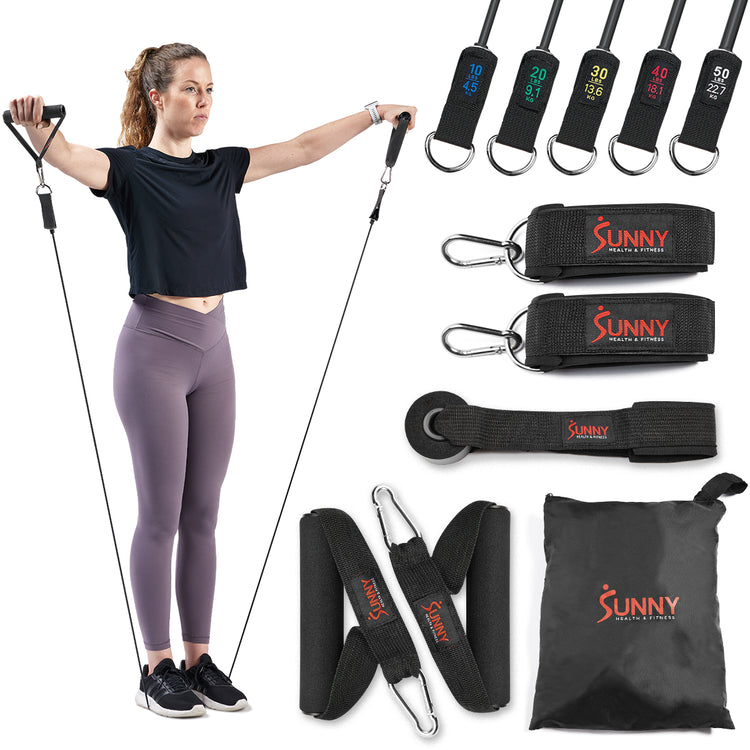Published on 5/3/2023, Updated 10/28/2025
As you get older, there are more and more reasons to slow down and become sedentary. Perhaps it's due to loss of stamina, pain problems, weight gain, health problems, fear of falling, or simply thinking it's too late and there is no point. Whatever the reason, some level of exercise can and should be incorporated into your day. That is why it’s important to embrace an exercise routine that works for you.
Regular physical activity can positively impact our physical, mental, and emotional health. Here are a few of the benefits you can gain from incorporating exercise into your routine.
Prevents Bone Loss
According to studies, the level of bone loss in a postmenopausal woman increases with age. Weight-bearing or resistance training exercises are often recommended as the primary preventive strategies to reduce the risk of osteoporosis and counteract the loss. This will reduce the risk of injuries and falls. (1)
Strengthens the Immune System and Helps Prevent Chronic Diseases
As we age, our immune systems slow, increasing the risk of illness. Adding exercise to your routine will help detox the lymphatic system and increase your body’s ability to fight off germs. According to the National Council on Aging, 91% of adults aged 65 or older have at least 1 chronic condition. Many studies have found that exercise helps prevent cardiovascular disease, high cholesterol, arthritis, coronary heart disease, colon cancer, diabetes, obesity, and hypertension. (2)
Increased Mobility
According to the Centers for Disease Control, falling is the leading cause of injury-related deaths for adults over the age of 65. (3) According to a 2016 study, mobility loss is usually a result of co-occurring impairments in the central nervous system, muscles, joints, and sensory physiological systems. (4) Mobility is not only important to help maintain independence but also to sustain a fulfilling lifestyle that includes travel, exploring new hobbies, or tackling new projects.
Relieves Pain
Chronic pain can reduce a person’s quality of life and limit their physical abilities. The most common types of pain in older adults include low back pain, joint osteoarthritis, and peripheral neuropathic pain. (5) Many people complain about feeling stiff and sore, but exercise can help take the pressure off aching joints. By strengthening the surrounding muscles, lubrication increases and joint inflammation decreases. (6)
Improves Mood and Reduces Stress
Neurotransmitters, such as dopamine, norepinephrine, and serotonin are responsible for how we feel. Regular exercise stimulates the production of these brain chemicals, improving mood and overall well-being. No matter your age, anxiety has become a serious global public health problem. Some studies have found that long-term adherence to low-intensity aerobic exercise can effectively reduce anxiety levels in older adults. (7)
Decreased Risk of Cognitive Problems
Some studies have shown that exercise reduces the risk of cognitive decline such as memory loss. (8) Extensive literature strongly suggests that aerobic exercise may reduce cognitive impairment and the risk of dementia by increasing hippocampal volumes and spatial memory. (9)
Best Exercises for Seniors: How to Get Started
According to the Physical Activity Guidelines for Americans, adults should do muscle-strengthening activities at least two days a week and at least 150 minutes (2 1/2 hours) a week of moderate-intensity aerobic exercise. (10) Research has shown that it’s important to get all four types of exercise: endurance, strength, balance, and flexibility. Here’s an example of what you can do to incorporate each type of exercise into your week:
| Monday | Wednesday | Friday |
|
Endurance, Strength, Balance: - Sit to Stand - Bridges - Resistance band T rows - Squat to balance with chair - Bicep Curls |
Endurance, Strength, Balance: |
Endurance, Strength, Balance: |
|
Flexibility: - Hip flexor stretch - Knee extension stretch - Standing hip circles - Seated side leans |
Flexibility: - Sit and reach stretch - Seated side twist - Seated cat pose - Tricep stretch |
Flexibility: - Shoulder Stretch - Hamstring Stretch - Neck Stretch - Hip Abduction |
If you would like to add extra equipment to your home gym, Sunny has several options you might want to check out!
If you want to work out with one of our Sunny trainers, check out these videos:




























Add Your Name & Email
Please enter your name and email to continue.We won’t display your email publicly.